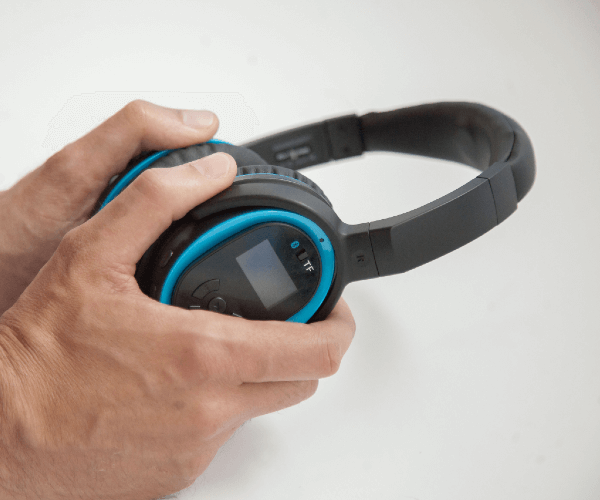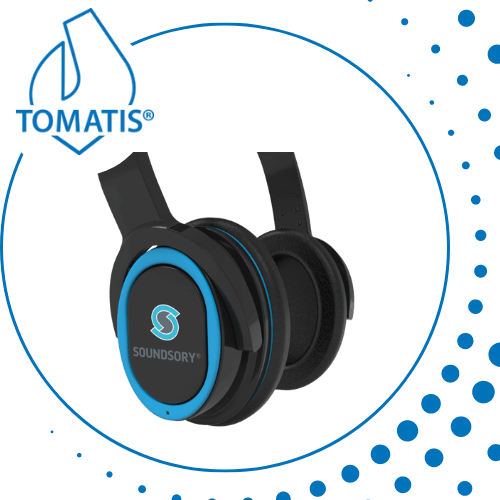The Scientific Research behind Soundsory

The Soundsory program is an innovative multi-sensory approach designed to enhance motor and cognitive abilities. It is rooted in the principles of the Tomatis® Method.
Below is a list of peer-reviewed studies related to Soundsory and other studies concerning the Tomatis Method. The dynamic filter system has also been studied using the Forbrain device.
Rehabilitation effect of seven-step cycle standing balance training combined with Soundsory cognitive training on stroke patients
Wang Hongbin, Zhen Yueyang, Hao Xijun, Chen Hongyan, Li Jing, Chen Changxiang. College of Nursing and Rehabilitation, North China University of Science and Technology, Tangshan 063210, China
Peer-reviewed publication: Journal of Nursing Science Sep.2023 Vol.38 No.17
Methods: A total of 80 patients with first-time stroke hemiplegia in the rehabilitation period with cognitive impairment were divided into a control group (40 cases) and an intervention group (40 cases) by random number table method. The control group received routine rehabilitation nursing, and the intervention group received seven-step cycle standing balance training combined with Soundsory cognitive training. Brunel Balance Scale (BBA) and Montreal Cognitive Assessment Scale (MoCA) were used to evaluate the intervention effect before the intervention, 2 weeks, and 4 weeks after the intervention, respectively.
Results: After 2 and 4 weeks of the intervention, the BBA score and MoCA score of the intervention group were significantly higher than those of the control group (all P < 0.05).
Conclusion: The seven-step cycle standing balance training combined with Soundsory cognitive training can effectively improve the balance and cognitive function of patients with hemiplegia after first-time stroke, and promote their rehabilitation.
The Effects of Soundsory Music Therapy on Memory Function, Executive Ability, and Anxiety and Depression in Elderly Stroke Patients with Comorbid Hypertension
Peer-reviewed publication Yang Wenwen, Wang Xiang, Xia Ling. Sichuan Journal of Physiological Sciences, 2022, 44(10): 1745-1747,1852.
Methods: From August 2020 to October 2021, 126 elderly stroke patients with comorbid hypertension were selected and randomly divided into a control group and an observation group, with 63 patients in each group. The control group received routine medical care and conventional functional training, while the observation group received Soundsory frequency conversion music therapy in addition to the routine care. Memory function, executive function, and anxiety and depression levels were assessed using the Rivermead Behavioral Memory Test-II (RBMT-II), Behavioral Assessment of Dysexecutive Syndrome (BADS), and Hospital Anxiety and Depression Scale (HADS).
Results: After the intervention, the observation group showed significantly higher scores in facial recognition, immediate recall of information, recall of appointment time, orientation and date, delayed recall of information, rule shift cards, zoo map, modified six elements, action planning, time judgment, and key search compared to the control group (P<0.05). Additionally, the HADS scores for the observation group were significantly lower than those of the control group (P<0.05).
Conclusion: Soundsory music therapy with different audio frequency conversion has a significant effect on elderly stroke patients with comorbid hypertension. It effectively improves memory function, enhances executive ability, and alleviates anxiety and depression, showing clinical value for broader application.
Interventional effect of Soundsory music therapy on memory impairment in elderly patients with coronary heart disease complicated with hypertension.
MA Xiaobin, BAI Jinwen, CHEN Changxiang
(College of Nursing and Rehabilitation, North China University of Science and Technology, Tangshan 063210, China)
Peer reviewed publication : Journal of North China University of Science and Technology (Health Sciences Edition), Nov 2020, Vol. 22, No. 6
Methods: A total of 120 elderly patients with cardiology in the North China University of Science and Technology Affiliated Hospital were randomly divided into the control group, the intervention group 1, and the intervention group 2, each with 40 people. The control group received routine treatment and care, intervention group 1 performed Soundsory auditory training on the basis of the control group (general music), and in the intervention group 2, Soundsory auditory training was performed on the basis of the control group (the music was converted by high and low audio). The memory function of the elderly was evaluated before and after the intervention using the second edition of the Behavioral Memory Test (RBMT-II).
Results: After the intervention, there were statistically significant differences in the 12 single-item and total standard score differences of the three groups of patients in RBMT-II (P < 0.05). Compared with the control group, the scores of the 8 individual items and the total standard score of the intervention group 1 were significantly higher than those of the control group, and the scores of the 12 individual items and the total standard score difference of the intervention group 2 were significantly higher than those of the control group, and the differences were statistically significant (P < 0.05). Compared with the intervention group 1, the intervention group 2 had an immediate difference in the scores of 8 items in the immediate recall story, instant information recall, facial recognition, orientation and date, recall appointment time, delayed recall story, delayed recall information, and RBMT-II total standard score. The differences were statistically significant (P < 0.05).
Conclusion: Soundsory high and low audio music therapy can effectively improve the memory function of elderly patients with coronary heart disease and comorbid hypertension.
Effect of Soundsory Music Therapy on Cognitive Impairment and Anxiety and Depression in Patients with Coronary Heart Disease and Hypertension
Dissertation Submitted to North China University of Science and Technology in partial fulfillment of the requirement for the degree of Master of Medicine by Ma Xiaobin
Supervisor: Professor Chen Changxiang
Methods: From October 2018 to June 2019, 120 elderly patients with coronary heart disease and comorbid hypertension were hospitalized in the Department of Cardiology, North China University of Science and Technology. They were divided into three groups: control group (conventional medical care), test group 1 (conventional medical care + Soundsory music therapy without high-low audio conversion), and test group 2 (conventional medical care + Soundsory music therapy with high-low audio conversion). Soundsory, developed by Sound for Life, is an auditory training system based on sound intervention and music integration. The intervention was administered three times daily for 25 minutes each over 14 days. Cognitive and emotional assessments were conducted before and after the intervention using the RBMT-II, BADS, Schulte Grid, and HADS scales. Data were analyzed using SPSS 19.0, with statistical significance set at P<0.05.
Results: After the intervention, the Soundsory music therapy training group showed significant improvements in memory, execution, and attention compared to the other groups (P<0.05). Additionally, anxiety and depression scores significantly improved in the Soundsory music therapy training group compared to the other groups (P<0.05).
Conclusions: Soundsory music therapy can significantly improve cognitive function (memory, execution, and attention) and alleviate anxiety and depression in elderly hospitalized patients with coronary heart disease and hypertension.
Soundsory and the Tomatis® Method

The Soundsory program, grounded in the scientifically validated Tomatis® Method, offers significant benefits for individuals with auditory processing disorders, attention deficits, autism spectrum disorders, learning disabilities.
While the Tomatis Method offers personalized programs based on listening tests, SOUNDSORY provides a universal listening program specifically crafted to enhance rhythm, motor skills, and coordination. Additionally, SOUNDSORY includes a unique exercise and movement program, distinguishing it from the traditional Tomatis Method and other listening therapies.
The synergy of auditory stimulation and physical exercises in Soundsory enhances its efficacy, making it a powerful tool for cognitive and motor development. Among over 100 studies related to the Tomatis Method and Auditory Stimulation, below is a summary of the most relevant studies in various fields of intervention.
Improvement in Auditory Processing Disorders
The effects of auditory stimulation on auditory processing disorder: a summary of findings
- Authors: Deborah Ross-Swain
- Summary: This study demonstrated significant improvements in auditory processing skills among children with auditory processing disorders after undergoing the Tomatis® Method. Key improvements were noted in auditory memory, sequencing, discrimination, and cohesion.
- Link: Study Link
Early Effects on Children with Attention Deficit
Early Effects of the Tomatis® Listening Method in Children with Attention Deficit
- Authors: Liliana Sacarin
- Summary: This research highlighted significant improvements in processing speed, phonological awareness, reading efficiency, attention, behavior, and brain physiology among children with ADD who received Tomatis® therapy.
- Link: Study Link
The Effects of the Tomatis Method on Music Learning Among School Children
- Author: Katarina Zadnik
- Summary: This qualitative study, conducted on a sample of three elementary school pupils, showed positive effects of the Tomatis Method on attention, concentration, internal calmness, and body posture while playing an instrument. Significant progress was noted in musical literacy for one pupil.
- Link: Study Link
Impact on Autism Spectrum Disorders
The Effect of Tomatis® Therapy on Children with Autism: Eleven Case Studies
- Authors: Jan Gerritsen PhD
- Summary: The study reported substantial improvements in communication, socialization, daily living skills, and reductions in hyperactivity and inattention among autistic children who underwent Tomatis® therapy.
- Link: Study Link
Improvement of symptoms in children with autism by TOMATIS training: a cross-sectional and longitudinal study
- Authors: Yujia Fu, Mei Tian, Jiaxi Chen, Wenfeng Chen, Huang Li
- Summary: This study validated the effect of TOMATIS training for ASD-related deficits, showing significant improvements in perceptual-motor, attentional, social, and emotional issues.
- Link: Study Link
Effectiveness of the Tomatis® Method in Children with Autism Spectrum Disorder
- Authors: Mirela Duranovic, Matea Andrejas, Lidija Kobelja, Jasmina Klebic
- Summary: This placebo-controlled blind study showed improvements in cognitive skills, communication, and fine motor skills in children with ASD after completing Tomatis® treatment.
- Link: Study Link
Effects on Learning Disabilities
The efficacy of the Tomatis® Method for children with learning and communication disorders: a Meta-Analysis
- Authors: Tim Gilmor
- Summary: A meta-analysis of 225 children with learning and communication difficulties revealed that the Tomatis® Method significantly enhanced language, cognitive, and psychomotor development, as well as social and personal behavior.
- Link: Study Link
The Soundsory program, leveraging the principles of the Tomatis® Method, has demonstrated significant benefits in enhancing auditory processing, attention, cognitive development, and motor skills. The incorporation of physical exercises further enhances its impact, making it a comprehensive tool for addressing various developmental and cognitive challenges.
For more details on the research supporting the efficacy of the Tomatis® Method visit Tomatis Research and Resources.
References
Fu Y, Tian M, Chen J, Chen W and Li H (2024) Improvement of symptoms in children with autism by TOMATIS training: a cross-sectional and longitudinal study. Front. Behav. Neurosci.
Ross-Swain, D. (2007). The Effects of Auditory Stimulation on Auditory Processing Disorder: A Summary of the Findings. International Journal of Listening, 21(2), 140–155.
Gilmor, T. (1999). The Efficacy of the Tomatis Method for Children with Learning and Communication Disorders: A Meta-Analysis. International Journal of Listening, 13(1), 12–23.
Gerritsen, J. (2010). The Effect of Tomatis Therapy on Children with Autism: Eleven Case Studies. International Journal of Listening, 24(1), 50–68.
Zadnik K. (2019). Učinki metode Tomatis na glasbeno učenje šolskih otrok. The Effects of the Tomatis Method on Music Learning Among School Children. Journal of Elementary Education, 12(4), 265-290.
Mirela Duranovic, Matea Andrejas, Lidija Kobelja et al. Effectiveness of the Tomatis® Method in Children with Autism Spectrum Disorder, 25 April 2024, PREPRINT (Version 1) available at Research Square

